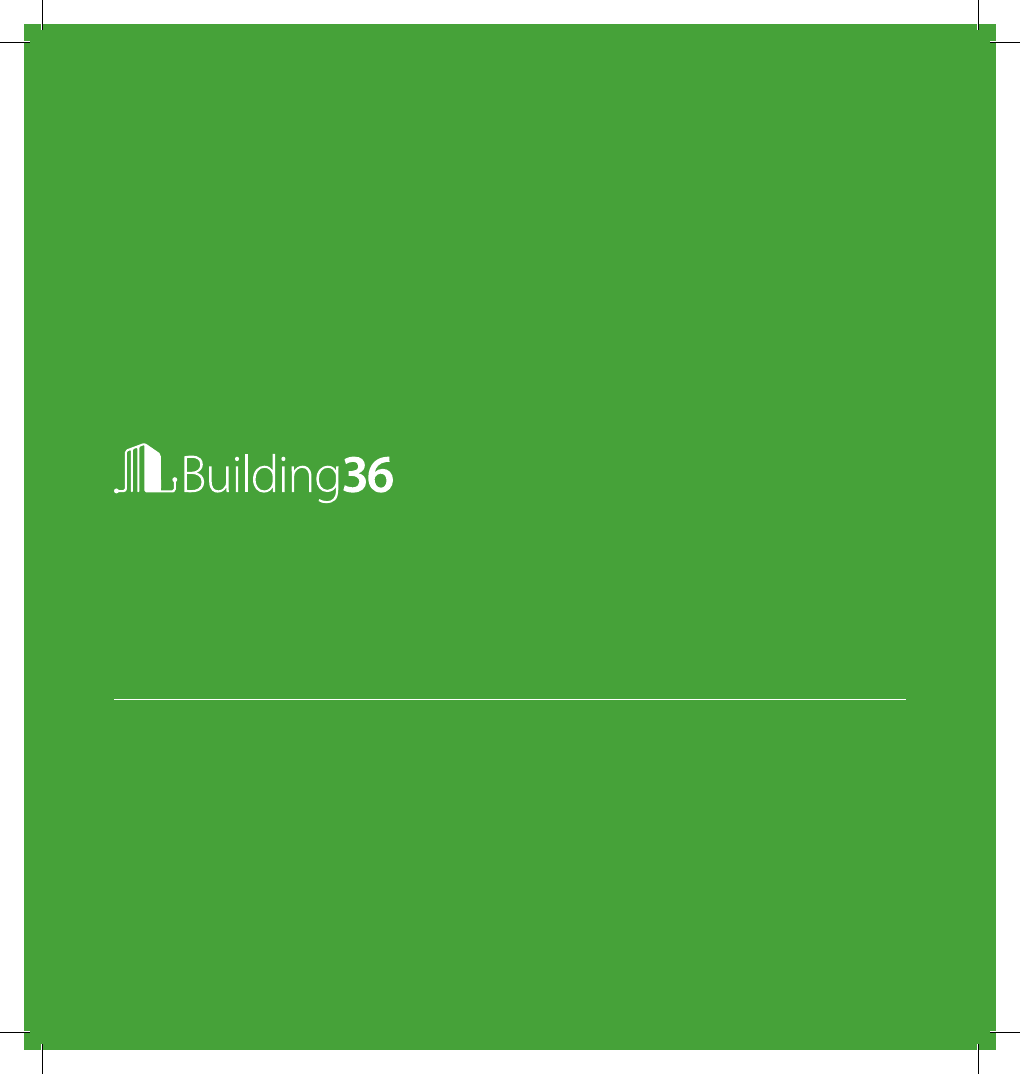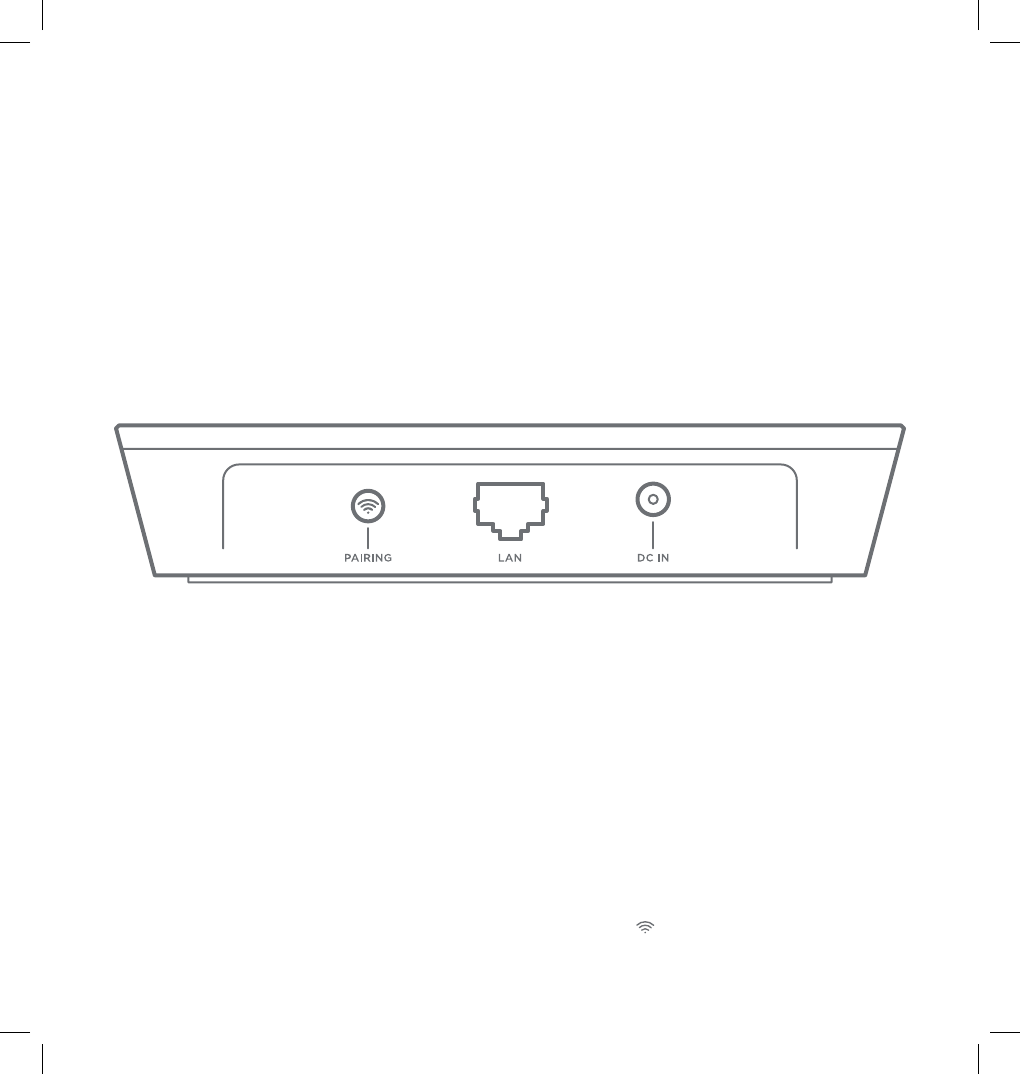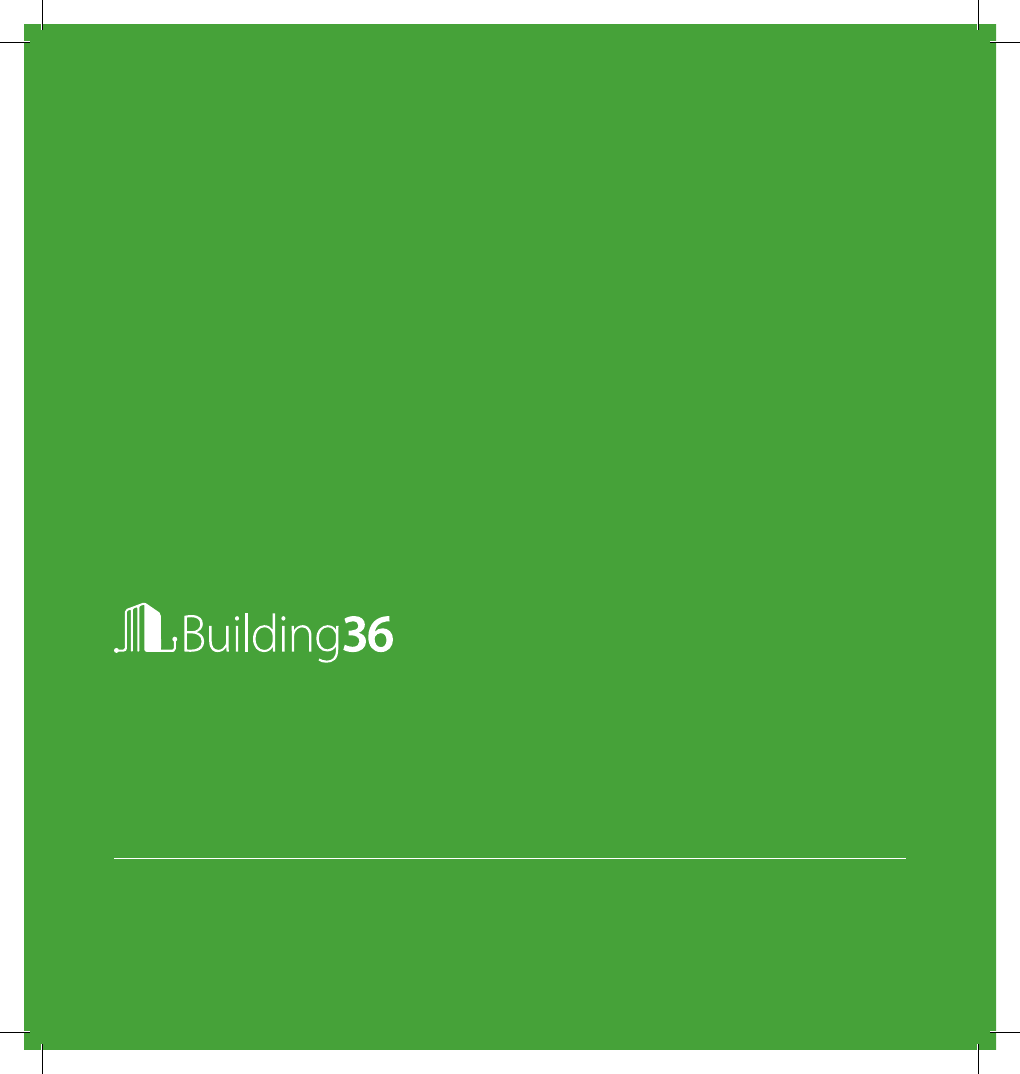Building 36 Technologies H200BRA Gateway User Manual
Building 36 Technologies, LLC Gateway
User Manual

ADC-T2000
User Guide
Hub
Product Manual


Hub Product Manual | 1
Indicator Lights
White
Flashing: no internet
connection, or, not connected
to the Building 36 servers
Solid: internet connection,
connected to the Building 36
servers
Green
Flashing: Inclusion mode
Solid: Successful Inclusion
Orange
Flashing: Exclusion mode
Solid: Successful Exclusion
Required
• Standard home router with active Internet connection
• Z-Wave devices to be installed
TIP: To exit Inclusion/Exclusion mode, press the Pairing button ( ).
Set Up

2 | Hub Product Manual
Installation
Step 1: Install the Hub
1. Plug one end of the Ethernet cable into the
LAN port on the Hub. Plug the other end of the
Ethernet cable into the network router.
2. Plug in the power supply to the DC IN port on
the Hub.
• Indicator lights will initially ash and rotate
colors during the rst few seconds. Wait
until only the White light stays solid or
continues ashing.
• The Hub will then take up to ve minutes to
register with Building 36 servers.
TIP: During this time, install each Z-Wave
device around the home.
Step 2: Including Z-Wave Devices
(adding them to the network)
To include Z-Wave devices, each device must be
within direct communication range of the Hub. For
best results, we recommend having the Hub in the
same room as the device you are Including.
1. If necessary, unplug the Hub to move it into
direct range of the rst Z-Wave device. Provide
the Hub with power and wait until only a
White Light stays solid or starts ashing. It is OK
to disconnect the Ethernet cable during the
Inclusion/Exclusion process.
2. Add Z-Wave Devices
• Press Pairing button ( ) on the Hub once to
put the Hub in Inclusion mode. The light will
start ashing Green.
• Follow the Z-Wave device’s instructions to put
the device into Inclusion mode. Most devices
have an Include/Exclude button.
• Wait for the ashing Green light to stay solid
for 5 seconds to indicated the device has been
successfully included.
An online account is required prior to installing
your Hub. If you do not have an account,
contact your Building 36 Professional Partner to
create one for you.

Hub Product Manual | 3
Troubleshooting
Step 3: Complete the Installation
1. Once all devices are Included, reconnect the
Hub to the network router with the Ethernet
cable and plug in power supply to the Hub.
2. Log into you User Account and navigate to
your dashboard.
For help, please view our online tutorials at
www.building36.com/videos
Excluding Z-Wave Devices
(removing them from the network)
To exclude Z-Wave devices, each device must be
within direct communication range of the Hub. For
best results, we recommend having Hub in the
same room as the device you are Excluding.
1. Press and hold the Pairing button ( ) for 5
seconds until the light ashes Orange to put the
Hub in Exclusion mode. While you’re holding
the Pairing button, the light will be ashing
Green before it turns Orange.
2. Follow the Z-Wave device’s instructions to put
the device into Exclusion mode. Most devices
have an Include/Exclude button.
3. The ashing Orange light will turn solid
to indicate the device has been successfully
excluded.
Unsuccessful Installation
If the Z-Wave device does not add successfully,
follow the device removal procedure and then try
the Inclusion process again.

4 | Hub Product Manual
Notices
FCC NOTICE:
This device complies with part 15 of the FCC
Rules. Operation is subject to the following
two conditions:
1. This device may not cause harmful interference.
–AND–
2. This device must accept any interference
received, including Interference that may cause
undesired operation.
This equipment has been tested and found
to comply with the limits for a Class B digital
device, pursuant to part 15 of the FCC
Rules. These limits are designed to provide
reasonable protection against harmful
interference in a residential installation.
This equipment generates, uses and can
radiate radio frequency energy and, if not
installed and used in accordance with the
instructions, may cause harmful interference
to radio communications. However, there
is no guarantee that interference will not occur
in a particular installation. If this equipment
does cause harmful interference to radio
or television reception, which can be
determined by turning the equipment o
and on, the user is encouraged to try
to correct the interference by one or more
of the following measures:
• Reorient or relocate the receiving antenna.
• Increase the separation between the equipment
and receiver.
• Connect the equipment into an outlet on
a circuit dierent from that to which the receiver
is connected.
• Consult the dealer or an experienced radio/TV
technician for help.

Hub Product Manual | 54 | Hub Product Manual
Notices
FCC RSS-GEN SEC 7.1.3 NOTICE:
This device complies with Industry Canada
license-exempt RSS standard(s). Operation is
subject to the following two conditions: (1) this
device may not cause interference, and (2) this
device must accept any interference, including
interference that may cause undesired operation
of the device.
Le présent appareil est conforme aux CNR
d’Industrie Canada applicables aux appareils radio
exempts de licence. L’exploitation est autorisée
aux deux conditions suivantes: (1) l’appareil ne
doit pas produire de brouillage, et (2) l’utilisateur
de l’appareil doit accepter tout broillage
radioélectrique subi, même si le brouillage est
susceptible d’en compromettre le fonctionnement.
This equipment has been tested and found
to comply with the limits for a Class B digital
device, pursuant to part 15 of the FCC
Rules. These limits are designed to provide
reasonable protection against harmful
interference in a residential installation.
This equipment generates, uses and can
radiate radio frequency energy and, if not
installed and used in accordance with the
instructions, may cause harmful interference
to radio communications. However, there
is no guarantee that interference will not occur
in a particular installation. If this equipment
does cause harmful interference to radio
or television reception, which can be
determined by turning the equipment o
and on, the user is encouraged to try
to correct the interference by one or more
of the following measures:
• Reorient or relocate the receiving antenna.
• Increase the separation between the equipment
and receiver.
• Connect the equipment into an outlet on
a circuit dierent from that to which the receiver
is connected.
• Consult the dealer or an experienced radio/TV
technician for help.
FCC 15.21 NOTICE:
The grantee is not responsible for any changes or
modications not expressly approved by the party
responsible for compliance. Such modications
could void the user’s authority to operate the
equipment.
IC NOTICE:
Under Industry Canada regulations, this radio
transmitter may only operate using an antenna
of a type and maximum (or lesser) gain approved
for the transmitter by Industry Canada. To reduce
potential radio interference to other users, the
antenna type and its gain should be so chosen that
the equivalent isotropically radiated power (e.i.r.p.)
is not more than that necessary for successful
communication.
Conformément à la réglementation d’Industrie
Canada, le présent émetteur radio peut fonctionner
avec une antenne d’un type et d’un gain maximal
(ou inférieur) approuvé pour l’émetteur par
Industrie Canada. Dans le but de réduire les risques
de brouillage radioélectrique à l’intention des
autres utilisateurs, il faut choisir le type d’antenne
et son gain de sorte que la puissance isotrope
rayonnée équivalente (p.i.r.e.) ne dépasse pas
l’intensité nécessaire à l’établissement d’une
communication satisfaisante.

Copyright © 2014 Alarm.com. All rights reserved. Alarm.com and the Alarm.com Logo are registered trademarks of Alarm.com.
www.Building36.com
© 2015 Building 36. All rights reserved.